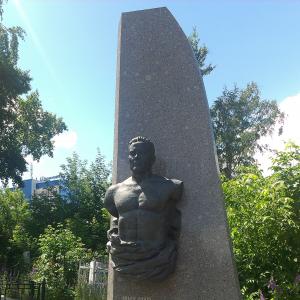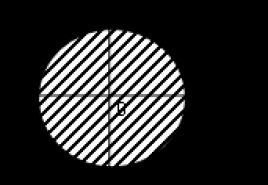Reaction equations in ionic form. Molecular, complete and short ionic equations
02-Feb-2014 | One Comment | Lolita Okolnova
Ionic reactions- reactions between ions in solution
Let's look at the basic inorganic and some reactions of organic chemistry.
Very often, in various chemistry assignments, you are asked to write not only chemical equations in molecular form, but also in ionic form (full and abbreviated). As already noted, ionic chemical reactions occur in solutions. Often, substances break down into ions in water.
Complete ionic equation for a chemical reaction: All compounds are electrolytes; we rewrite them in ionic form, taking into account the coefficients:
2NaOH + H 2 SO 4 = Na 2 SO 4 + 2H 2 O - molecular reaction equation
2Na + +2OH - +2H + + SO -2 = 2Na + + SO 4 -2 + 2H 2 O - complete ionic reaction equation
Abbreviated ionic equation for a chemical reaction: we reduce the same components:
2Na + +2OH - +2H + + SO -2 = 2Na + + SO 4 -2 + 2H 2 O
Based on the results of this reduction of identical ions, it is clear which ions formed what is insoluble or slightly soluble - gaseous products or reagents, precipitates or slightly dissociating substances.
Do not decompose into ions in ionic chemical reactions substances:
1. insoluble in water compounds (or poorly soluble) (see );
Ca(NO3)2 + 2NaOH = Ca(OH)2↓ + 2NaNO3
Сa 2+ + 2NO 3 — + 2Na + +2OH — = Ca(OH)2 + 2Na + +2NO 3 — — complete ionic reaction equation
Ca 2+ + 2OH - = Ca(OH)2 - abbreviated ionic reaction equation
2. gaseous substances, for example, O 2, Cl 2, NO, etc.:
Na 2 S + 2HCl = 2NaCl + H 2 S
2Na + + S -2 + 2H + +2Cl - = 2Na + + 2Cl - + H2S - complete ionic reaction equation
S -2 + 2H + = H2S - abbreviated ionic reaction equation
3. low-dissociating substances (H2O, NH4OH);
neutralization reaction
OH - + H + = H 2 O - abbreviated ionic reaction equation
4. (all: both formed by metals and non-metals);
2AgNO3 + 2NaOH = Ag2O + 2NaNO3 + H2O
2Ag + + 2NO 3 - + 2Na + + 2OH - = Ag2O + 2NO 3 - + 2Na + + H2O - complete ionic reaction equation
2Ag + + 2OH - = Ag2O + H2O - abbreviated ionic reaction equation
5. organic matter (organic acids classified as low-dissociation substances)
CH 3 COOH + NaOH = CH 3 COONa + H 2 O
CH 3 COOH + Na + + OH - = CH 3 COO - + Na + + H2O - complete ionic reaction equation
CH 3 COOH + OH - = CH 3 COO - + H2O - abbreviated ionic reaction equation
Often ionic chemical reactions are exchange reactions.
If all the substances participating in the reaction are in the form of ions, then their binding to form a new substance does not occur, so the reaction in this case is practically impossible.
A distinctive feature of chemical reactions of ion exchange from redox reactions is that they occur without changing the oxidation states of the particles involved in the reaction.
- in the Unified State Exam this is a question - Ion exchange reactions
- in the GIA (OGE) this is - Ion exchange reactions
Since electrolytes in solution are in the form of ions, reactions between solutions of salts, bases and acids are reactions between ions, i.e. ion reactions. Some of the ions, participating in the reaction, lead to the formation of new substances (lowly dissociating substances, precipitation, gases, water), while other ions, present in the solution, do not produce new substances, but remain in the solution. In order to show which ions interact to form new substances, molecular, complete and brief ionic equations are drawn up.
IN molecular equations All substances are presented in the form of molecules. Complete ionic equations show the entire list of ions present in the solution during a given reaction. Brief ionic equations are composed only of those ions, the interaction between which leads to the formation of new substances (lowly dissociating substances, sediments, gases, water).
When compiling ionic reactions It should be remembered that substances are slightly dissociated (weak electrolytes), slightly and sparingly soluble (precipitate - “ N”, “M”, see appendix, table 4) and gaseous ones are written in the form of molecules. Strong electrolytes, almost completely dissociated, are in the form of ions. The “↓” sign after the formula of a substance indicates that this substance is removed from the reaction sphere in the form of a precipitate, and the “” sign indicates that the substance is removed in the form of a gas.
The procedure for composing ionic equations using known molecular equations Let's look at the example of the reaction between solutions of Na 2 CO 3 and HCl.
1. The reaction equation is written in molecular form:
Na 2 CO 3 + 2HCl → 2NaCl + H 2 CO 3
2. The equation is rewritten in ionic form, with well-dissociating substances written in the form of ions, and poorly dissociating substances (including water), gases or poorly soluble substances - in the form of molecules. The coefficient in front of the formula of a substance in a molecular equation applies equally to each of the ions that make up the substance, and therefore it is placed in front of the ion in the ionic equation:
2 Na + + CO 3 2- + 2H + + 2Cl -<=>2Na + + 2Cl - + CO 2 + H 2 O
3. From both sides of the equality, ions found in the left and right sides are excluded (reduced):
2Na++ CO 3 2- + 2H + + 2Cl -<=> 2Na+ + 2Cl -+ CO 2 + H 2 O
4. The ionic equation is written in its final form (short ionic equation):
2H + + CO 3 2-<=>CO 2 + H 2 O
If during the reaction both slightly dissociated and/or sparingly soluble and/or gaseous substances and/or water are formed, and there are no such compounds in the starting substances, then the reaction will be practically irreversible (→), and a molecular formula can be compiled for it, complete and brief ionic equation. If such substances are present both in the reagents and in the products, then the reaction will be reversible (<=>):
Molecular equation: CaCO 3 + 2HCl<=>CaCl 2 + H 2 O + CO 2
Complete ionic equation: CaCO 3 + 2H + + 2Cl –<=>Ca 2+ + 2Cl – + H 2 O + CO 2
Ionic equations are an integral part of chemistry. They present only those components that change during a chemical reaction. Most often, ionic equations are used to describe redox reactions, exchange reactions, and neutralization reactions. To write an ionic equation, you need to follow three basic steps: balance the molecular equation of a chemical reaction, translate it into a complete ionic equation (that is, write the components as they exist in solution), and finally write a short ionic equation.
Steps
Part 1
Components of the ionic equation- Follow the rules in the order they appear below:
- all Na + , K + and NH 4 + salts dissolve;
- all salts NO 3 -, C 2 H 3 O 2 -, ClO 3 - and ClO 4 - are soluble;
- all salts Ag + , Pb 2+ and Hg 2 2+ are insoluble;
- all salts Cl -, Br - and I - dissolve;
- salts CO 3 2-, O 2-, S 2-, OH -, PO 4 3-, CrO 4 2-, Cr 2 O 7 2- and SO 3 2- are insoluble (with some exceptions);
- SO 4 2- salts are soluble (with some exceptions).
-
Identify the cation and anion of the compound. Cations are positively charged ions (usually metals). Anions have a negative charge, usually non-metal ions. Some nonmetals can form not only anions, but also cations, while metal atoms always act as cations.
- For example, in the compound NaCl (table salt), Na is a positively charged cation because it is a metal, and Cl is a negatively charged anion because it is a non-metal.
-
Identify the polyatomic (complex) ions involved in the reaction. Such ions are charged molecules whose atoms have such a strong bond that they do not dissociate during chemical reactions. It is necessary to identify polyatomic ions because they have their own charge and do not break down into individual atoms. Polyatomic ions can have both positive and negative charges.
Part 2
Writing ionic equations-
Balance the complete molecular equation. Before writing the ionic equation, the original molecular equation must be balanced. To do this, it is necessary to place the appropriate coefficients in front of the compounds, so that the number of atoms of each element on the left side is equal to their number on the right side of the equation.
- Write the number of atoms of each element on both sides of the equation.
- Add coefficients in front of the elements (except oxygen and hydrogen) so that the number of atoms of each element on the left and right sides of the equation is the same.
- Balance the hydrogen atoms.
- Balance the oxygen atoms.
- Count the number of atoms of each element on both sides of the equation and make sure it is the same.
- For example, after balancing the equation Cr + NiCl 2 --> CrCl 3 + Ni, we get 2Cr + 3NiCl 2 --> 2CrCl 3 + 3Ni.
-
Determine what state each substance that participates in the reaction is in. This can often be judged by the conditions of the problem. There are certain rules that help determine what state an element or connection is in.
Determine which compounds dissociate (separate into cations and anions) in solution. Upon dissociation, a compound breaks down into positive (cation) and negative (anion) components. These components will then enter the ionic equation of the chemical reaction.
Calculate the charge of each dissociated ion. Remember that metals form positively charged cations, and non-metal atoms turn into negative anions. Determine the charges of elements using the periodic table. It is also necessary to balance all charges in neutral compounds.
-
Rewrite the equation so that all soluble compounds are separated into individual ions. Anything that dissociates or ionizes (such as strong acids) will split into two separate ions. In this case, the substance will remain in a dissolved state ( rr). Check that the equation is balanced.
- Solids, liquids, gases, weak acids and ionic compounds with low solubility will not change their state and will not separate into ions. Leave them as is.
- The molecular compounds will simply disperse into the solution and their state will change to dissolved ( rr). There are three molecular compounds that Not will go into state ( rr), this is CH 4( G) , C 3 H 8 ( G) and C8H18( and) .
- For the reaction under consideration, the complete ionic equation will be written in the following form: 2Cr ( TV) + 3Ni 2+ ( rr) + 6Cl - ( rr) --> 2Cr 3+ ( rr) + 6Cl - ( rr) + 3Ni ( TV) . If chlorine is not part of the compound, it breaks down into individual atoms, so we multiplied the number of Cl ions by 6 on both sides of the equation.
-
Combine the same ions on the left and right sides of the equation. You can only cross out those ions that are completely identical on both sides of the equation (have the same charges, subscripts, etc.). Rewrite the equation without these ions.
- In our example, both sides of the equation contain 6 Cl - ions, which can be crossed out. Thus, we obtain a short ionic equation: 2Cr ( TV) + 3Ni 2+ ( rr) --> 2Cr 3+ ( rr) + 3Ni ( TV) .
- Check the result. The total charges on the left and right sides of the ionic equation must be equal.
-
Understand the difference between molecular and ionic compounds . To write the ionic equation, the first step is to determine the ionic compounds involved in the reaction. Ionic substances are those substances that dissociate (break up) into charged ions in aqueous solutions. Molecular compounds do not break down into ions. They are composed of two non-metallic elements and are sometimes called covalent compounds.
Determine the solubility of the compound. Not all ionic compounds are soluble in aqueous solutions, that is, not all of them dissociate into individual ions. Before you begin writing the equation, you must find the solubility of each compound. Below are brief rules for solubility. More details and exceptions to the rules can be found in the solubility table.
Ion exchange reactions are reactions in aqueous solutions between electrolytes that occur without changes in the oxidation states of the elements that form them.
A necessary condition The reaction between electrolytes (salts, acids and bases) is the formation of a slightly dissociating substance (water, weak acid, ammonium hydroxide), precipitate or gas.
Let's consider the reaction that results in the formation of water. Such reactions include all reactions between any acid and any base. For example, the interaction of nitric acid with potassium hydroxide:
HNO 3 + KOH = KNO 3 + H 2 O (1)
Starting materials, i.e. nitric acid and potassium hydroxide, as well as one of the products, namely potassium nitrate, are strong electrolytes, i.e. V aqueous solution they exist almost exclusively in the form of ions. The resulting water belongs to weak electrolytes, i.e. practically does not disintegrate into ions. Thus, the equation above can be rewritten more accurately by indicating the real state of substances in an aqueous solution, i.e. in the form of ions:
H + + NO 3 − + K + + OH ‑ = K + + NO 3 − + H 2 O (2)
As can be seen from equation (2), both before and after the reaction, NO 3 − and K + ions are present in the solution. In other words, essentially, nitrate ions and potassium ions did not participate in the reaction at all. The reaction occurred only due to the combination of H + and OH − particles into water molecules. Thus, by performing an algebraic reduction of identical ions in equation (2):
H + + NO 3 − + K + + OH ‑ = K + + NO 3 − + H 2 O
we will get:
H + + OH ‑ = H 2 O (3)
Equations of the form (3) are called abbreviated ionic equations, type (2) - complete ionic equations, and type (1) - molecular reaction equations.
In fact, the ionic equation of a reaction maximally reflects its essence, precisely what makes its occurrence possible. It should be noted that many different reactions can correspond to one abbreviated ionic equation. Indeed, if we take, for example, not nitric acid, but hydrochloric acid, and instead of potassium hydroxide we use, say, barium hydroxide, we have the following molecular reaction equation:
2HCl+ Ba(OH) 2 = BaCl 2 + 2H 2 O
Hydrochloric acid, barium hydroxide and barium chloride are strong electrolytes, that is, they exist in solution primarily in the form of ions. Water, as discussed above, is a weak electrolyte, that is, it exists in solution almost only in the form of molecules. Thus, complete ionic equation This reaction will look like this:
2H + + 2Cl − + Ba 2+ + 2OH − = Ba 2+ + 2Cl − + 2H 2 O
Let's cancel the same ions on the left and right and get:
2H + + 2OH − = 2H 2 O
Dividing both the left and right sides by 2, we get:
H + + OH − = H 2 O,
Received abbreviated ionic equation completely coincides with the abbreviated ionic equation for the interaction of nitric acid and potassium hydroxide.
When composing ionic equations in the form of ions, write only the formulas:
1) strong acids (HCl, HBr, HI, H 2 SO 4, HNO 3, HClO 4) (the list of strong acids must be learned!)
2) strong reasons(hydroxides of alkali (ALM) and alkaline earth metals (ALM))
3) soluble salts
The formulas are written in molecular form:
1) Water H 2 O
2) Weak acids (H 2 S, H 2 CO 3, HF, HCN, CH 3 COOH (and others, almost all organic)).
3) Weak bases (NH 4 OH and almost all metal hydroxides except alkali metal and alkali metal.
4) Slightly soluble salts (↓) (“M” or “H” in the solubility table).
5) Oxides (and other substances that are not electrolytes).
Let's try to write down the equation between iron (III) hydroxide and sulfuric acid. In molecular form, the equation of their interaction is written as follows:
2Fe(OH) 3 + 3H 2 SO 4 = Fe 2 (SO 4) 3 + 6H 2 O
Iron (III) hydroxide corresponds to the designation “H” in the solubility table, which tells us about its insolubility, i.e. in the ionic equation it must be written in its entirety, i.e. as Fe(OH) 3 . Sulfuric acid It is soluble and belongs to strong electrolytes, that is, it exists in solution mainly in a dissociated state. Iron(III) sulfate, like almost all other salts, is a strong electrolyte, and since it is soluble in water, it must be written as an ion in the ionic equation. Taking into account all of the above, we obtain a complete ionic equation of the following form:
2Fe(OH) 3 + 6H + + 3SO 4 2- = 2Fe 3+ + 3SO 4 2- + 6H 2 O
Reducing the sulfate ions on the left and right, we get:
2Fe(OH) 3 + 6H + = 2Fe 3+ + 6H 2 O
Dividing both sides of the equation by 2 we get the abbreviated ionic equation:
Fe(OH) 3 + 3H + = Fe 3+ + 3H 2 O
Now let's look at the ion exchange reaction that produces a precipitate. For example, the interaction of two soluble salts:
All three salts - sodium carbonate, calcium chloride, sodium chloride and calcium carbonate (yes, that too) - are strong electrolytes and all except calcium carbonate are soluble in water, i.e. are involved in this reaction in the form of ions:
2Na + + CO 3 2- + Ca 2+ + 2Cl − = CaCO 3 ↓+ 2Na + + 2Cl −
By reducing identical ions on the left and right in given equation, we get the abbreviated ionic:
CO 3 2- + Ca 2+ = CaCO 3 ↓
The last equation reflects the reason for the interaction of solutions of sodium carbonate and calcium chloride. Calcium ions and carbonate ions combine into neutral calcium carbonate molecules, which, when combined with each other, give rise to small crystals of CaCO 3 precipitate of ionic structure.
Note important for passing the Unified State Exam in chemistry
In order for the reaction of salt1 with salt2 to proceed, in addition to the basic requirements for the occurrence of ionic reactions (gas, sediment or water in the reaction products), such reactions are subject to another requirement - the initial salts must be soluble. That is, for example,
CuS + Fe(NO 3) 2 ≠ FeS + Cu(NO 3) 2
the reaction does not proceed, although FeS could potentially give a precipitate, because insoluble. The reason that the reaction does not proceed is the insolubility of one of the starting salts (CuS).
But, for example,
Na 2 CO 3 + CaCl 2 = CaCO 3 ↓+ 2NaCl
occurs because calcium carbonate is insoluble and the starting salts are soluble.
The same applies to the interaction of salts with bases. In addition to the basic requirements for the occurrence of ion exchange reactions, in order for a salt to react with a base, the solubility of both of them is necessary. Thus:
Cu(OH) 2 + Na 2 S – does not leak,
because Cu(OH) 2 is insoluble, although potential product CuS would be a precipitate.
But the reaction between NaOH and Cu(NO 3) 2 proceeds, so both starting substances are soluble and give a precipitate of Cu(OH) 2:
2NaOH + Cu(NO 3) 2 = Cu(OH) 2 ↓+ 2NaNO 3
Attention! In no case should you extend the requirement of solubility of starting substances beyond the reactions salt1 + salt2 and salt + base.
For example, with acids this requirement is not necessary. In particular, all soluble acids react well with all carbonates, including insoluble ones.
In other words:
1) Salt1 + salt2 - the reaction occurs if the original salts are soluble, and there is a precipitate in the products
2) Salt + metal hydroxide - the reaction occurs if the starting substances are soluble and there is a precipitate or ammonium hydroxide in the products.
Let's consider the third condition for the occurrence of ion exchange reactions - the formation of gas. Strictly speaking, only as a result of ion exchange the formation of gas is possible only in in rare cases, for example, during the formation of hydrogen sulfide gas:
K 2 S + 2HBr = 2KBr + H 2 S
In most other cases, gas is formed as a result of the decomposition of one of the products of the ion exchange reaction. For example, you need to know exactly within the framework of the Unified State Exam that with the formation of gas due to instability, products such as H 2 CO 3, NH 4 OH and H 2 SO 3 decompose:
H 2 CO 3 = H 2 O + CO 2
NH 4 OH = H 2 O + NH 3
H 2 SO 3 = H 2 O + SO 2
In other words, if as a result of ion exchange, carbonic acid, ammonium hydroxide or sulfurous acid, the ion exchange reaction occurs due to the formation of a gaseous product:
Let us write down the ionic equations for all the above reactions leading to the formation of gases. 1) For reaction:
K 2 S + 2HBr = 2KBr + H 2 S
Potassium sulfide and potassium bromide will be written in ionic form, because are soluble salts, as well as hydrobromic acid, because refers to strong acids. Hydrogen sulfide, being a poorly soluble gas that dissociates poorly into ions, will be written in molecular form:
2K + + S 2- + 2H + + 2Br — = 2K + + 2Br — + H 2 S
Reducing identical ions we get:
S 2- + 2H + = H 2 S
2) For the equation:
Na 2 CO 3 + H 2 SO 4 = Na 2 SO 4 + H 2 O + CO 2
In ionic form, Na 2 CO 3, Na 2 SO 4 will be written as highly soluble salts and H 2 SO 4 as a strong acid. Water is a poorly dissociating substance, and CO 2 is not an electrolyte at all, so their formulas will be written in molecular form:
2Na + + CO 3 2- + 2H + + SO 4 2- = 2Na + + SO 4 2 + H 2 O + CO 2
CO 3 2- + 2H + = H 2 O + CO 2
3) for the equation:
NH 4 NO 3 + KOH = KNO 3 + H 2 O + NH 3
Molecules of water and ammonia will be written in their entirety, and NH 4 NO 3, KNO 3 and KOH will be written in ionic form, because all nitrates are highly soluble salts, and KOH is an alkali metal hydroxide, i.e. strong base:
NH 4 + + NO 3 − + K + + OH − = K + + NO 3 − + H 2 O + NH 3
NH 4 + + OH − = H 2 O + NH 3
For the equation:
Na 2 SO 3 + 2HCl = 2NaCl + H 2 O + SO 2
The full and abbreviated equation will look like:
2Na + + SO 3 2- + 2H + + 2Cl − = 2Na + + 2Cl − + H 2 O + SO 2
Example 1.
Fe(OH) 2 + H 2 SO 4 FeSO 4 +2H 2 O
Fe(OH) 2 is a practically insoluble compound (see solubility table), and therefore is written in undissociated (molecular) form: Fe(OH) 2.
H 2 SO 4 is a highly soluble compound, which is also a strong electrolyte (see the list of acids - strong electrolytes given above), and therefore is written in dissociated form: 2H + + SO 4 2-.
FeSO 4 is a highly soluble compound (see solubility table), which is also a strong electrolyte (since it is a salt), and therefore is written in dissociated form: Fe 2+ + SO 4 2- .
Water H 2 O is a weak electrolyte, and therefore is written in its undissociated form: 2H 2 O.
Fe(OH) 2 + 2H + + SO 4 2- Fe 2+ + SO 4 2- + 2H 2 O
or, after canceling identical particles on the left and right sides of the equation (SO 4 2-),
Fe(OH) 2 + 2H + Fe 2+ + 2H 2 O.
Example 2 . Write the ionic-molecular equation of the reaction:
FeCl 3 + 3NH 4 OH Fe(OH) 3 ↓+ 3NH 4 Cl
FeCl 3 is a highly soluble compound, which is also a strong electrolyte (since it is a salt), and therefore is written in dissociated form: Fe 3+ + 3Cl - .
NH 4 OH is also a soluble compound, but it is a weak electrolyte (not included in the list of strong bases, see above), and therefore is written in molecular form: 3NH 4 OH.
Fe(OH) 3 is a practically insoluble compound and, therefore, is written in molecular form: Fe(OH) 3.
NH 4 Cl is a highly soluble compound, which is also a strong electrolyte (since it is a salt), and therefore is written in dissociated form: 3NH 4 + + 3Cl - .
The total ion-molecular equation is written as follows:
Fe 3+ + 3Cl - + 3NH 4 OH Fe(OH) 3 ↓ + 3NH 4 + + 3Cl -
or, after reduction of identical ions (Cl -),
Fe 3+ + 3NH 4 OH Fe(OH) 3 ↓ + 3NH4+.
Example 3. Write the ionic-molecular equation of the reaction:
KI + AgI K.
KI is a highly soluble compound, which is also a strong electrolyte (since it is a salt), and therefore is written in dissociated form: K + + I - .
AgI is a practically insoluble compound and is therefore written in its undissociated (molecular) form: AgI.
K is a complex compound, as evidenced by the presence of square brackets in the formula of the compound. The compound itself is a salt, highly soluble in water (the precipitate sign is not marked), and therefore it must dissociate into K + and - ions. In this case, the resulting ion is complex (stable), i.e., practically does not undergo further dissociation. Thus, the connection is written as: K + + - .
The total ion-molecular equation is written as follows:
K + + I - + AgI = K + + -
or, after canceling identical particles on the left and right sides of the equation (K+),
AgI + I - - .
Getting the job done
Experiment 1. Formation of poorly soluble bases. Pour 3-5 drops of an iron (III) salt solution into one test tube, the same amount of a copper (II) salt solution into another, and a nickel (II) salt solution into a third. Add a few drops of alkali solution to each test tube until precipitation occurs. Save the sediment until the next experiment.
What class do the resulting metal hydroxide precipitates belong to? Are these hydroxides strong bases?
Experiment 2. Dissolution of poorly soluble bases. Add a few drops of hydrochloric acid solution with a concentration of 15% to the precipitates obtained in the previous experiment until they are completely dissolved.
What new, slightly dissociated compound is formed when bases are dissolved in an acid?
Experiment 3. Formation of slightly soluble salts.
A. Pour 3-5 drops of lead (II) nitrate solution into two test tubes and add a few drops of potassium iodide to one test tube and barium chloride to the other.
What is observed in each test tube?
B. Pour 3-5 drops of sodium sulfate solution into one test tube, and the same amount of chromium (III) sulfate solution into the other. Add a few drops of barium chloride solution to each test tube until precipitation occurs.
What substance is formed as a precipitate? Will a similar reaction of barium chloride, for example, with iron (III) sulfate occur?
Experiment 4. Study of the properties of amphoteric hydroxides.
A . Add 3 drops of zinc salt solution and a few drops of diluted sodium hydroxide solution (from a rack with reagents) until a precipitate of zinc hydroxide forms. Dissolve the resulting precipitates: in one test tube - in a solution of hydrochloric acid, in another - in excess concentrated caustic soda solution (from a fume hood).
B. Add 3 drops of aluminum salt solution and a few drops into two test tubes diluted caustic soda solution (from a rack with reagents) until a precipitate of aluminum hydroxide forms. Dissolve the resulting precipitates: in one test tube - in a solution of hydrochloric acid, in another - in excess concentrated
B. Add 3 drops of chromium (III) salt solution and a few drops of diluted sodium hydroxide solution (from a rack with reagents) until a precipitate of chromium (III) hydroxide forms. Dissolve the resulting precipitates: in one test tube - in a solution of hydrochloric acid, in another - in excess concentrated caustic soda solution (from a fume hood).
Experiment 5. Formation of slightly dissociated compounds. Add 3-5 drops of ammonium chloride solution into a test tube and add a few drops of sodium hydroxide solution. Pay attention to the smell, explain its appearance based on the reaction equation.
Experiment 6. Formation of complexes. Pour 3-5 drops of copper (II) sulfate solution into a test tube, then add drop by drop diluted(from a rack with reagents!) ammonia solution until a precipitate of hydroxycopper (II) sulfate forms according to the reaction:
2CuSO 4 + 2NH 4 OH = (CuOH) 2 SO 4 ↓ + (NH 4) 2 SO 4
Add excess to sediment concentrated ammonia solution (from a fume hood!). Pay attention to the dissolution of the precipitate according to the reaction:
(CuOH) 2 SO 4 + (NH 4) 2 SO 4 + 6NH 4 OH = 2SO 4 + 8H 2 O
What color does the resulting soluble copper ammine complex have?
Experiment 7. Formation of gases.
A. Pour 3-5 drops of sodium carbonate solution and a few drops of sulfuric acid into a test tube. What is being observed?
B. Pour 3-5 drops of sodium sulfide solution and 1 drop of sulfuric acid into a test tube. Pay attention to the smell of escaping gas.







